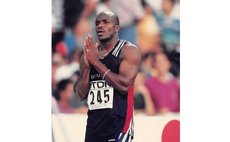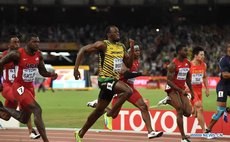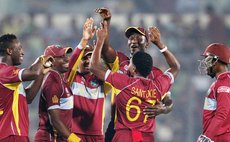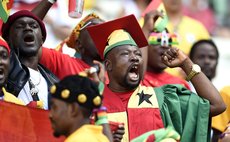Transition-a dire necessity
Having paid close attention to the closing phases of the Youth World Cup played in Bangladesh, I concluded most strongly there is a vital need for a positive influx of a few of our youth players into the West Indies senior team for both Tests and one day internationals. And this is not based on mere impulse but on deep seated necessity. Let's go back a few years. West Indies welcomed Sir Len Hutton's England side in the Caribbean for a 5-match Test series starting 15th January 1954. This came on the heels of West Indies bringing off a 1-nil triumph over India on the strength of a 142-run victory at Barbados, with the remaining matches at Trinidad (2 matches), Guyana and Jamaica all ending as draws. The upperhand though was very much with West Indies in each of those drawn engagements. The series with England ended 2-2 after West Indies had won the opening two matches. England took the third and fifth. England featured in her ranks the famed spinners Lock and Laker and the highly successful Trueman and Statham as their pace spearheads. It is little remembered that one Sir Gary Sobers made his Test debut for West Indies in the 5th Test at Jamaica – batting at No. 9. He scored 14 not out and 26.
Sobers was not yet 18 years old. He would reach that milestone on 28th July 1954, about four months after his Test debut. The auspicious company greeting him into the side comprised John K. Holt (Jr.), Jeffrey Stollmeyer as openers, the illustrious W's Weekes, Worrell and Walcott followed by Denis Atkinson, Gerry Gomez, Clifford McWatt (keeper), Frank King with spinner Sonny Ramadhin at No. 11. England won by nine wickets scoring 414 after bowling out West Indies for 139 and 346 – making the required 72 for victory, losing just the one wicket.
Much worse was to follow not much later when Australia visited the Caribbean for the first time for the 1955 series. Australia under Ian Johnson defeated West Indies under new captain Atkinson 3-nil, taking the 1st Test by 9 wickets, the 3rd by 8 wickets and the 5th by an innings and 82 runs. In this latter, the Aussies registered five centuries on the Sabina Park strip, scoring 758 for 8 before declaring. West Indies responded with 357 and 319.
Making his debut for the 1st Test was one O'Neil Gordon Smith of Jamaica, three years the senior to Sobers in age. He would be 22 two months after making his debut. Against Australia Smith scored 44 and 104 on debut, 0 and 0, then was left out for the third Test, and returned to score 2 and 11 and 29 and 16. For Sobers, who did not appear for the 1st Test against Australia, it was 47 and 8 not out, 12 and 11, 43 and 11 and 35 and 64. Next against New Zealand in 1956 Smith posted 64; 11 and 1; and 2 and 0. Sobers 27 (run out); 25; and 27; and 1 and 1. Note, when West Indies went to England for the 1957 series Smith was able to come up with some decent batting form: 161 and 5; 25 and 5; 2 and 168; 15 and 8 and 7 and 0. Sobers ended the tour without getting his maiden Test century: 53 and 14; 17 and 66; 47 and 9; 4 and 29 (run out) and 39 and 42.
Another young West Indian Rohan Kanhai made his debut in that ill-fated tour to England which we lost 3-nil. He was 21 years old and made scores of 42 and 1; 34 and 0; 42 and 28; 47 and 0 and 4 not out and 8.
It took Kanhai several more Test innings before reaching the three figure mark, albeit he stumbled on 96 against Pakistan and 99 (run out) versus India before decorating his career with 217 against Pakistan in 1959. The Sobers legend erupted in 1958 as he took 52; 52 and 80 in the 1st and 2nd Tests before emblazoning his world record 365 not out in the third Test against Pakistan.
Now – back to the present! In looking at performances in the 2016 Under 19 World Cup, nobody is saying that the left handed Shimron Hetmyer is another Gary Sobers or Tevin Imlach is another Rohan Kanhai or Shamar Springer another Collie Smith. However, when you view and weigh the current West Indies Test side, you see the need for a young batsman to open with Kraigg Brathwaite. You immediately sense the value in blooding a youngster to replace Marlon Samuels who clearly has lost his way! Also, you need another youngster to fill a gaping hole at No. 5 or No. 6.
Similarly, with the bowling, the time is now for Alzarri Joseph to be eased into the mix to explore the potential of his highly promising pace, having clocked a consistent 83 miles per hour and achieving a peak of around 90 miles per hour. He and Holder and Springer can be eased into the team against lesser opponents like Zimbabwe, Bangladesh and possibly Sri Lanka or Pakistan. All these territories are not averse to giving their youngsters a try. Why shouldn't we who are faced with imminent fall to the bottom of the international ladder?
Of a certainty, the present situation of our new emerging youngsters does not see them with the protective family assemblage that existed for Sobers, Kanhai and Collie Smith who had experienced campaigners galore around them like Stollmeyer, the W's etc – well entrenched in leadership positions. All we see now is Kraigg Brathwaite, still a work in progress as an opening batsman. So also is Darren Bravo as the premier No. 3 batsman. Jason Holder still has to find his feet as captain and lead pacer. Ramdin is short of fulfilling his promise of gaining eminence as wicket keeper/batsman. And Carlos Brathwaite is potently new in the role of lower order batsman who can bowl or vice versa. It would help immensely if the senior side would admit one or two of the youth team into their ranks for Test match engagements against teams like Zimbabwe, Bangladesh and, say, Sri Lanka and Pakistan who are not at the moment dominant. This would serve as gentler passage into the upper realms of the international arena. Meanwhile, those who prepared them for the Under 19 World Cup must be complimented and allowed a longer period of consolidation of their efforts. Meanwhile, congratulations to our Under 19 boys.




